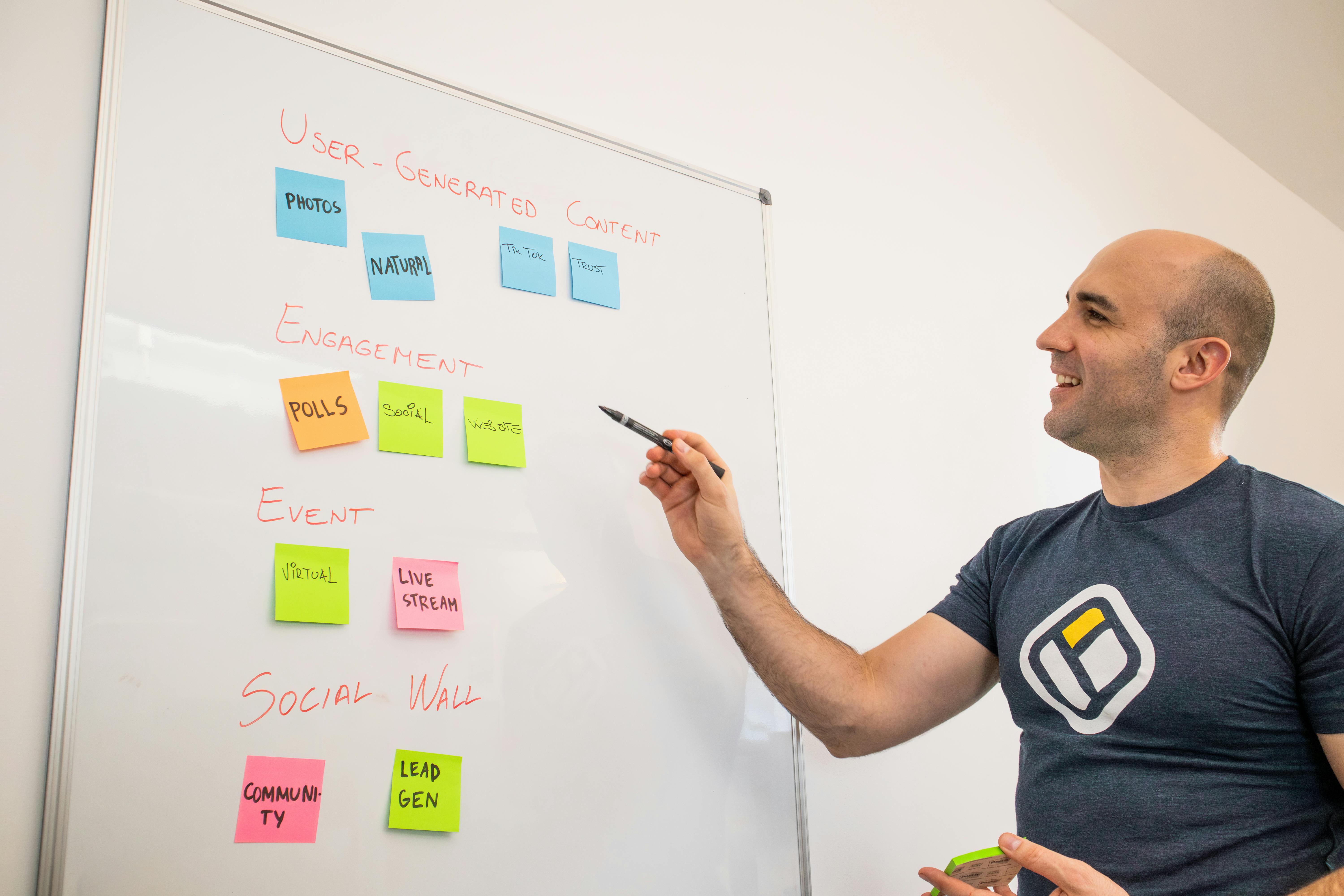Are you interested in real estate development projects but worried about the potential risks involved? Look no further! In this article, you will discover effective strategies to mitigate risks in real estate development projects. Whether you are a seasoned investor or a novice, these tips will provide you with valuable insights on how to navigate potential pitfalls, protect your investment, and maximize the success of your real estate ventures. So, let’s dive into the world of risk mitigation and pave the way for safer and more profitable real estate development projects.
Thorough Market Analysis
Explore market trends
When embarking on a real estate development project, it is crucial to have a thorough understanding of the market trends. By exploring the current and projected future trends in the real estate market, you can make more informed decisions and mitigate potential risks. Analyzing factors such as population growth, employment rates, and demand for specific property types can help you in determining the feasibility and profitability of your project. Keep an eye on market indicators, such as rental and occupancy rates, to identify any shifts or emerging opportunities.
Analyze supply and demand
Another essential aspect of mitigating risks in real estate development projects is analyzing the supply and demand dynamics in the market. Understanding the current supply of properties in the area where you plan to develop can give you insights into the level of competition and potential saturation of the market. Simultaneously, assessing the demand for your intended property type can help you gauge the market’s appetite and ensure that there is sufficient demand to support your project. By carefully analyzing the supply and demand factors, you can make more accurate predictions about the demand for your project and, consequently, minimize the risk of overbuilding or underutilization.
Study competition
To mitigate risks effectively, it is vital to conduct a thorough study of the competition in the real estate market. Identify other developers and projects within your target area and analyze their offerings, pricing strategies, and market share. Understanding the strengths and weaknesses of your competitors can help you position your project strategically, differentiating yourself and maximizing your project’s desirability. By studying the competition, you can gain valuable insights into the market dynamics, potential challenges, and opportunities, enabling you to make informed decisions and minimize risks.
Proper Due Diligence
Conduct property inspections
When it comes to real estate development projects, conducting comprehensive property inspections is a critical component of mitigating risks. By thoroughly inspecting potential project sites, you can identify any existing or potential issues that may affect the feasibility or success of your project. This includes assessing the condition of existing structures, identifying potential environmental hazards, and evaluating the suitability of the site for your intended development. Engaging professional inspectors and surveyors can provide you with invaluable insights and help you make informed decisions based on the findings of their assessments.
Assess legal and environmental factors
In addition to property inspections, it is essential to assess the legal and environmental factors that may impact your real estate development project. Ensure that you are compliant with all relevant laws and regulations concerning zoning, building codes, and environmental protection measures. Engage legal experts and environmental consultants to conduct assessments and identify any potential legal or environmental risks that may arise during the course of your project. By addressing these factors upfront, you can avoid costly delays, penalties, or disputes down the line, minimizing potential risks and ensuring a smoother development process.
Verify zoning and permits
One of the key elements of proper due diligence in real estate development is verifying zoning and permits. Ensure that the property you intend to develop is appropriately zoned for your intended use. Verify the availability and validity of necessary permits, licenses, and approvals required for your project’s compliance. Failure to comply with zoning regulations or secure necessary permits can result in significant setbacks, delays, or even the suspension of your project. By conducting thorough verification of zoning and permits, you can mitigate the risk of non-compliance and ensure a smoother development process.
Financial Feasibility Assessment
Calculate costs and returns
Conducting a comprehensive financial feasibility assessment is crucial for mitigating risks in real estate development projects. Calculate the total costs associated with the project, including land acquisition, construction, marketing, and other expenses. Ensure that you accurately estimate the expected returns on investment, considering factors such as rental income, property appreciation, and potential exit strategies. By carefully calculating costs and returns, you can determine the viability and profitability of your project, making informed decisions and minimizing financial risks.
Perform sensitivity analysis
To further mitigate financial risks, it is essential to perform sensitivity analysis. This involves examining how changes in various factors, such as construction costs, interest rates, and rental income, may impact the project’s financial outcomes. By conducting sensitivity analysis, you can identify potential risks and evaluate different scenarios, allowing you to develop contingency plans and adjust your strategies accordingly. Sensitivity analysis provides valuable insights into the project’s resilience and helps you make informed decisions that minimize financial risks.
Consider financing options
In real estate development projects, carefully considering financing options is crucial for mitigating financial risks. Explore different financing alternatives, such as traditional bank loans, private equity, partnership structures, or crowdfunding. Assess the terms and conditions of each financing option, including interest rates, repayment schedules, and any potential collateral requirements. By diversifying your sources of funding and choosing the most suitable financing options, you can reduce reliance on a single source and minimize the risk of financial constraints or default.
Equitable and Clear Contracts
Ensure precise contract language
To mitigate risks effectively, it is essential to ensure that all contracts associated with your real estate development project have precise and unambiguous language. Clearly define the rights, obligations, and responsibilities of all parties involved, including contractors, suppliers, and investors. Avoid vague or ambiguous terms that may lead to misinterpretation or disputes. Engage legal professionals experienced in real estate contracts to review and draft agreements that protect your interests and minimize the risk of legal conflicts.
Define clear responsibilities
Alongside precise contract language, defining clear responsibilities is vital for mitigating risks in real estate development projects. Establish and communicate the roles and responsibilities of all stakeholders involved in the project, including your team members, contractors, consultants, and any third-party service providers. By clearly outlining and documenting these responsibilities, you can ensure accountability, avoid misunderstandings, and minimize the risk of errors, delays, or disputes arising from unclear expectations.
Include dispute resolution mechanisms
Despite careful planning and execution, disputes may inevitably arise during the course of a real estate development project. To mitigate risks, include effective dispute resolution mechanisms in your contracts. Consider alternative dispute resolution methods, such as mediation or arbitration, which can often be faster and more cost-effective than traditional litigation. Documenting these mechanisms in advance can help resolve any disagreements efficiently and protect your project’s progress, ensuring smooth operations and minimizing the risk of delays or costly legal battles.
Risk Diversification
Invest in multiple projects
To mitigate risks effectively in real estate development, consider diversifying your investments by participating in multiple projects. By spreading your investments across different developments, locations, or property types, you can reduce exposure to individual project risks. Diversification allows you to minimize the impact of potential setbacks in one project by leveraging the successes of others. It also provides opportunities to tap into various market segments, increasing the likelihood of profitability and protecting your overall investment portfolio from concentrated risks.
Explore different real estate sectors
In addition to diversifying through multiple projects, exploring different real estate sectors can further mitigate risks. Consider investing in different sectors such as residential, commercial, industrial, or mixed-use developments. Each sector has its own dynamics, drivers, and risks. By diversifying your portfolio across multiple real estate sectors, you can benefit from different market cycles, balance out potential market downturns, and capitalize on the strengths and opportunities unique to each sector.
Consider geographic diversification
Alongside investing in multiple projects and sectors, geographic diversification is another effective risk mitigation strategy in real estate development. Explore opportunities in different locations, both within your home market and internationally. By expanding your geographic reach, you can tap into diverse economic conditions, regulatory environments, and market demands. This helps lessen the impact of regional or local market fluctuations and minimizes the risk of being overly reliant on a specific area or market.
Effective Project Management
Set realistic timelines
To mitigate risks in real estate development projects, effective project management plays a vital role. One key aspect of successful project management is setting realistic timelines. Develop a detailed project plan that considers all stages of the development process, including acquisition, design, permitting, construction, marketing, and completion. Ensure that the projected timelines are achievable and take into account potential challenges or delays, such as weather conditions, labor shortages, or regulatory approvals. By setting realistic timelines, you can manage expectations, avoid costly delays, and minimize schedule-related risks.
Monitor progress regularly
Monitoring the progress of your real estate development project is crucial for risk mitigation. Regularly track key performance indicators, such as construction milestones, budgetary adherence, and sales or leasing progress. Implement project management software or tools to facilitate efficient monitoring and reporting. By staying on top of project progress, you can identify any deviations from the plan early on and take proactive measures to address challenges, make necessary adjustments, or allocate additional resources as needed. Regular monitoring ensures that potential risks are identified promptly, allowing you to take corrective actions and safeguard the project’s success.
Implement quality control measures
In real estate development projects, implementing robust quality control measures is essential for mitigating risks. Establish stringent quality standards and inspect the construction process regularly to ensure compliance. Engage qualified third-party inspection and testing services to assess the quality of materials, workmanship, and adherence to building codes. By incorporating quality control measures, you can detect and rectify any issues or deviations before they escalate, avoiding costly rework, safety risks, or potential legal consequences. Prioritizing quality control helps maintain the project’s integrity, reputation, and long-term value.
Thorough Legal and Financial Documentation
Ensure accurate financial records
Maintaining accurate and up-to-date financial records is crucial for mitigating risks in real estate development projects. Establish robust accounting and record-keeping systems that comply with relevant accounting principles and industry standards. Track and monitor all financial transactions, including income, expenses, capital investments, and cash flow. Regularly review and reconcile financial statements to identify any discrepancies or irregularities promptly. By ensuring accurate financial records, you can make informed financial decisions, demonstrate transparency, and minimize the risk of financial mismanagement or fraud.
Comply with relevant laws and regulations
Compliance with relevant laws and regulations is another critical aspect of mitigating risks in real estate development projects. Stay updated on all applicable laws, regulations, building codes, and environmental guidelines that govern your development activities. Engage legal experts to interpret and advise on compliance requirements throughout the project. Adhering to legal and regulatory standards helps minimize the risk of penalties, litigation, or project suspensions, ensuring the smooth progression of your development and protecting your investment.
Secure necessary insurance coverage
Proper insurance coverage is essential for mitigating risks in real estate development projects. Evaluate the specific risks associated with your project, such as construction-related accidents, property damage, or third-party liability, and obtain comprehensive insurance policies to cover these risks adequately. Engage insurance brokers or risk management specialists to guide you in selecting the most suitable coverage based on your project’s characteristics and local requirements. By securing necessary insurance, you can transfer potential risks to insurance providers and protect your project and financial interests against unforeseen events or liabilities.
Collaboration with Experienced Professionals
Engage skilled architects and engineers
Collaborating with skilled architects and engineers is crucial for mitigating risks and ensuring the success of your real estate development project. Hire qualified professionals who possess the necessary expertise, experience, and track record in their respective fields. Ensure that they possess up-to-date knowledge of industry standards, codes, and best practices. Effective collaboration with architects and engineers helps in optimizing design, mitigating construction-related risks, and ensuring compliance with quality and safety standards. By having a competent team on board, you can enhance the feasibility, efficiency, and overall success of your project.
Hire experienced project managers
Real estate development projects benefit greatly from the expertise and guidance of experienced project managers. Engage professionals experienced in managing similar projects, preferably with a track record of successful completions. Effective project managers provide leadership, establish project goals, oversee the implementation of plans, and manage resources. They facilitate communication, coordinate different stakeholders, and ensure that the project adheres to timelines, quality standards, and budgetary constraints. By harnessing project management expertise, you can minimize risks, optimize resource usage, and achieve successful project outcomes.
Consult legal and financial advisors
To further enhance risk mitigation efforts, consult legal and financial advisors throughout your real estate development project. Engage professionals specializing in real estate law and finance to provide expert guidance and advice. They can assist in navigating legal complexities, interpreting regulations, and mitigating legal risks. Financial advisors can provide insights on optimizing project financing, identifying tax planning strategies, and managing financial risks. By leveraging the expertise of legal and financial advisors, you can make better-informed decisions, mitigate risks more effectively, and ensure the overall success of your project.
Building Strong Relationships
Establish good rapport with stakeholders
Building strong relationships with stakeholders is a key component of mitigating risks in real estate development projects. Stakeholders can include investors, lenders, regulators, community members, and neighboring property owners. Establish open lines of communication, demonstrate transparency, and foster trust throughout the project lifecycle. By proactively engaging stakeholders, addressing their concerns, and keeping them informed, you can minimize the risk of misunderstandings, conflicts, or negative perceptions that could impede the project’s progress. Strong stakeholder relationships contribute to a supportive environment and can lead to smoother operations and reduced risks.
Maintain positive relationships with contractors
Maintaining positive relationships with contractors, subcontractors, and suppliers is essential for mitigating risks in real estate development projects. Select reputable and reliable contractors who have a proven track record of successful project deliveries. Communicate expectations clearly, establish fair and transparent payment terms, and address any issues or concerns promptly. By fostering a constructive working relationship, you create an environment that promotes collaboration, accountability, and quality workmanship, minimizing the risk of delays, disputes, or substandard construction. Good relationships with contractors ensure that your project progresses smoothly and in line with quality standards.
Foster trust with project partners
In addition to stakeholders and contractors, fostering trust with project partners is vital for risk mitigation. This includes architects, engineers, legal advisors, financial institutions, and other individuals or entities involved in the development process. Collaborate with reputable and reliable partners who share your project vision and exhibit a strong commitment to excellence. Establish clear communication channels, maintain regular updates, and proactively address any challenges or concerns. By nurturing trust with project partners, you can foster a collaborative environment and minimize the risk of miscommunications, conflicts, or breakdowns in teamwork that could jeopardize the project’s success.
Continuous Monitoring and Adaptation
Regularly assess project risks
To effectively mitigate risks in real estate development projects, it is vital to continuously assess and monitor project risks. Regularly review your risk register and conduct risk assessments throughout the different project stages. Identify emerging risks, evaluate their potential impact on the project objectives, and develop contingency plans to mitigate or address these risks in a timely manner. By staying vigilant and proactive in monitoring project risks, you can make informed decisions, adapt your strategies, and respond to potential challenges before they escalate, ensuring the project’s success.
Adapt strategies based on market changes
Market conditions and trends are constantly evolving, and to mitigate risks, it is crucial to adapt your strategies accordingly. Regularly reassess the market dynamics, such as shifts in demand, changes in regulations, or emerging trends. Analyze how these changes may impact your project and make necessary adjustments to your development plans, marketing strategies, or financing arrangements. By remaining agile and responsive to market changes, you can capitalize on new opportunities, minimize risks associated with outdated strategies, and ensure the continued success and profitability of your real estate development project.
Monitor potential external factors
In addition to market changes, keeping an eye on potential external factors is essential for risk mitigation. Monitor factors such as changes in economic conditions, interest rates, environmental regulations, or geopolitical events that may impact the real estate market. Stay informed through industry publications, news sources, and expert insights. By being proactive in monitoring external factors, you can anticipate potential risks, adjust your strategies proactively, and navigate potential challenges, minimizing any adverse impacts on your development project. Continuous monitoring allows you to stay ahead of the curve and make informed decisions that support the success of your project.
In conclusion, mitigating risks in real estate development projects requires a comprehensive approach that encompasses thorough market analysis, proper due diligence, financial feasibility assessment, clear and equitable contracts, risk diversification, effective project management, thorough legal and financial documentation, collaboration with experienced professionals, building strong relationships, and continuous monitoring and adaptation. By implementing these strategies and best practices, developers can minimize risks, maximize their chances of success, and ensure the profitability and viability of their real estate development projects.



